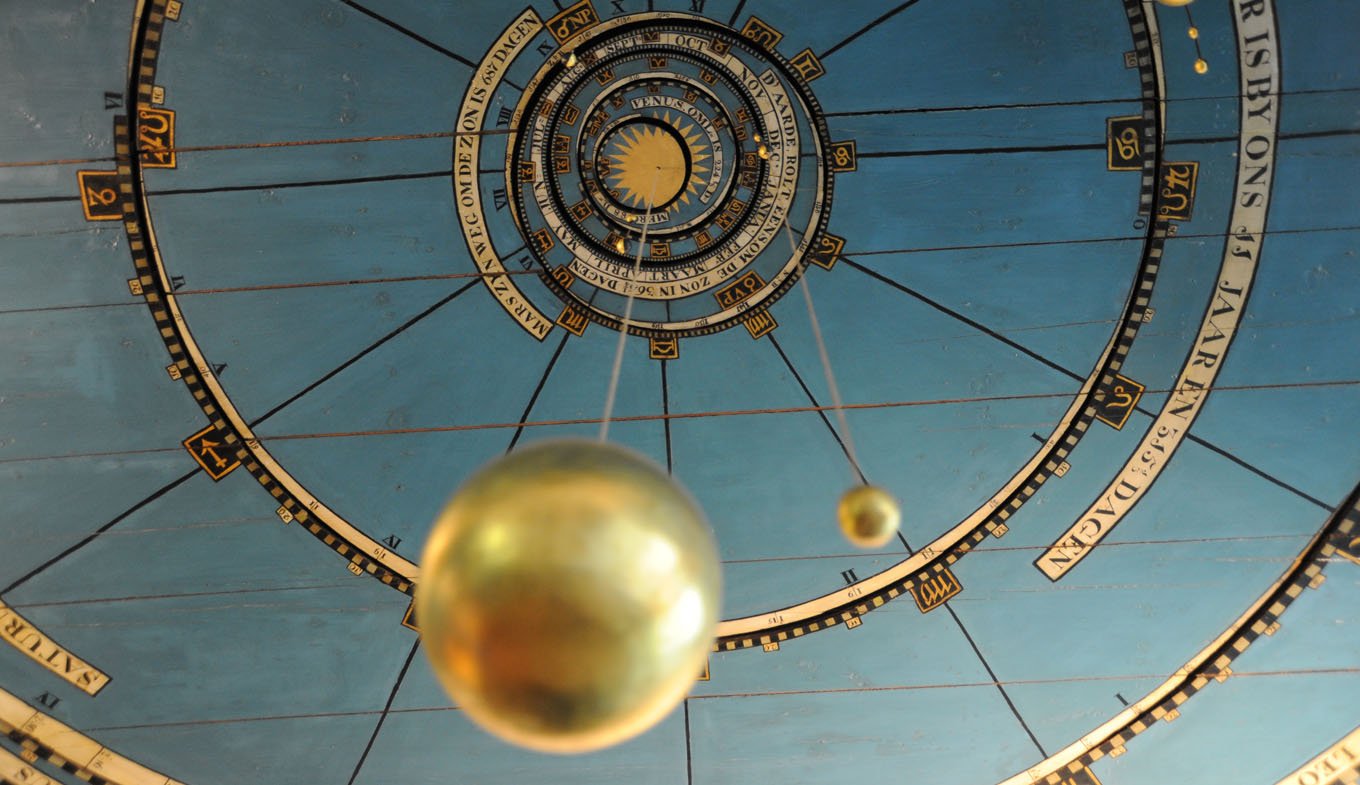
Eise Eisinga becomes World Heritage Site - Sept. 19, 2023
The Royal Eise-Eisinga Planetarium, its full name, is the oldest functioning planetarium in the world. Between 1774 and 1781, the highly talented Dutch amateur astronomer Eise Eisinga built a movable model of the solar system. To make it fit in his living room, Eisinga, who actually earned his living in the textile trade as a wool comber, used a scale of 1:1,000,000,000: one millimetre thus corresponds to one million kilometres. The model is still in its original state and is open to the public all year round. "We started the nomination process in 2003, and it is of course great that Eise Eisinga's planetarium has now actually been inscribed on the World Heritage List 20 years later," says director Adrie Warmenhoven: "Eise Eisinga deserves it."
Eisinga (1744-1828) came up with the idea of building the planetarium to disprove a contemporary prophecy. It said that some planets were on a collision course and therefore the end of the world was imminent. He hoped to prove the opposite with his model and allay his countrymen's fears of future apocalypses. He was not a scientist in the classical sense, but a highly intelligent autodidact who had only attended primary school and had acquired his enormous knowledge himself. He built the planetarium in seven years with the support of his father and brother, entirely on his own initiative and primarily in the evenings and at night, as he ran his wool combing business during the day.
Eisinga's work was so extraordinary that a professor at the University of Franeker, Jan Hendrik van Swinden, wrote an entire book about it after visiting the planetarium and asked Eisinga to give guest lectures. King William I also visited the planetarium with his son, Prince Frederick of the Netherlands, in 1818. A few years later, in 1825, he bought it for the Empire for a very large sum at the time and gave it the title Royal Eisinga Planetarium. Eisinga was allowed to stay there and received an annual fee to keep it running and maintained. Eisinga died in 1828 at the age of 84. In 1859, the state donated the planetarium to the municipality of Franeker.
The Dutch World Heritage Sites
The Dutch UNESCO World Heritage Sites range from unique nature reserves to unique buildings and remarkable architecture. The full list includes the Lower Germanic Limes, the Dutch Water Conservation Line, the Colonies of Mercy in Drenthe and Friesland, the Van Nelle Factory in Rotterdam, the Wadden Sea, the Rietveld-Schröder House in Utrecht, the Beemster polder, the Woudagemaal steam pumping station near Lemmer in Friesland, the Schokland nature reserve and the Noordoostpolder in Flevoland province, the canals of Amsterdam and the windmills of Kinderdijk-Elshout. The Kingdom of the Netherlands includes another UNESCO site, the historic centre of Willemstad on Curaçao, which is an autonomous country within the Kingdom.
Background
UNESCO (United Nations Educational, Scientific and Cultural Organization) was founded in 1945 and is part of the United Nations. The World Heritage Convention is UNESCO's best known and has been signed by all UNESCO Member States. The aim of the Convention is to preserve a heritage - a site and/or a building - of unique and universal value for humanity and thus for future generations. With this convention, the member states have committed themselves to protect, conserve, mark and make accessible their World Heritage sites. The Netherlands signed the World Heritage Convention in 1992.